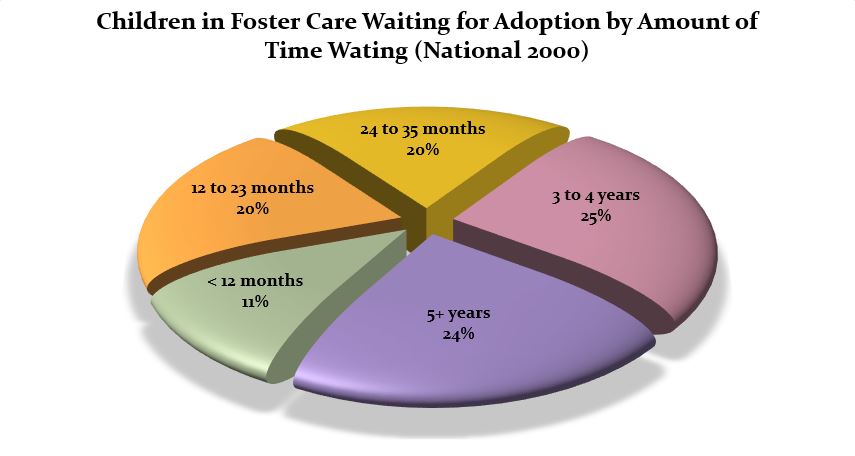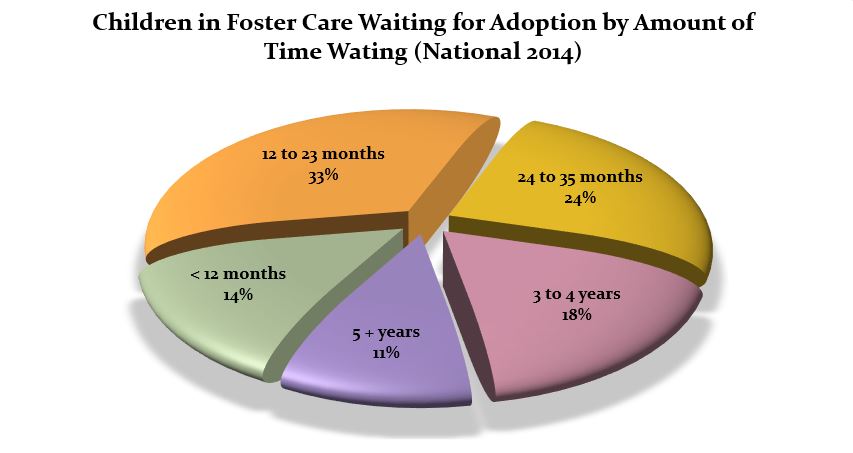The journey from foster care to adoption can be a long, trying and uncertain road. The Administration for Children and Families’ (ACF) annual Adoption and Foster Care Analysis and Reporting System (AFCARS) Report for 2015 found that the national average for time spent between becoming a foster child and being adopted was 31.7 months. While that may seem like a long time, it marks a noticeable improvement from 2003, when the ACF found the national average to be 44.5 months.

Spending close to two years in foster care may seem like an eternity, but the process takes this long to ensure the best for the child. Prior to 1997, states ran foster care systems in accordance with the Adoption Assistance and Child Welfare Act of 1980. The act promoted permanency by requiring states to make reasonable efforts to prevent the removal of children from their homes, as well as reunite the children who had been removed.
The National Effort to Shorten the Foster to Adopt Process
While reunification is always the goal of foster care, this act pushed for returning the children back to their biological parents, which at times endangered the child’s life and placed the child back into the system. In 1997, the Adoption and Safe Families Act (ASFA) was passed after concern arose that foster children were left in care for extended lengths of time and were shuffled between homes too often.
Before ASFA, states had 18 months from the time the child entered foster care to determine a plan for the child’s future, whether it was reunification or adoption. With the passing of the ASFA, social workers were required to develop concurrent plans for the foster child. The primary plan focused on reunification. If parental rights were terminated, then the state would look towards adoption. Concurrent planning effectively reduced the time a child spent in foster care by having a plan in place if the court decided to terminate parental rights, opposed to the previous method of waiting 18 months to determine the next step.
Within one year of each child’s entrance into the system, ASFA requires a permanency hearing. During these hearings, the state examines if and when these children will be reunited with their biological parents and what further steps the biological parents need to take to regain custody. If reunification isn’t possible, the court will choose when to file the petition to terminate parental rights and shift focus to the secondary plan. Along with the permanency hearings, ASFA also mandates that states begin the process of terminating parental rights if the child has been in foster care for 15 out of the past 22 months.
While the termination of parental rights is a big step in the process, it doesn’t mean the child can immediately be adopted. The ACF found, on average, children across the nation are adopted one year from the time parental rights are terminated. The wait is the result of a variety of things, such as appeals from the biological parents, finding an attorney, filing for adoption and finding an available court day to finalize the adoption.
New Jersey’s Efforts to Shorten the Foster to Adopt Process
Since 2000, New Jersey has made significant strides in reducing the amount of time children spend in foster care before adoption. In 2000, the Annie E. Casey Foundation found that 47% of foster children in New Jersey spent three or more years in care, which was slightly below the national average of 49%. Their 2014 study shows that only 24% of foster children spend three or more years in the system, which is an improvement over the national average of 29%.
The drastic decrease in those staying three or more years helped create a 20% increase in foster children spending 12 to 23 months in foster care waiting to be adopted. With 39% in this category, New Jersey went from being 1% below the national average in 2000 to being 6% above by 2014. Along with besting most of the national averages, the ACF also found that New Jersey has a lower average time between the termination of parental rights and adoption finalization.
While New Jersey works to ensure children aren’t left in foster care for extended periods of time, it doesn’t mean the state is eager to push for adoption from the start. The state is required to make reasonable efforts to reunify families and is taking steps to lower the number of parents’ rights being terminated. Commissioner of New Jersey’s Department of Children and Families (DCF) Dr. Allison Blake told the Associated Press that DCF has been hiring more caseworkers to help decrease terminations to, “44 per 100,000 children, roughly half the national rate.”
These caseworkers are helping ensure the biological parents are making the neccesary changes to regain custody of their children and avoid having their parental rights terminated. If the judge decides the parents are making progress at the permanency hearing, he will rule in favor of extenting child’s stay in foster care in the interest of reuniting the family. While this is done with childrens best interests in mind, it can add a few months to a few years to their time in the system.
When it comes to adopting from foster care, there are many misconceptions about the process that lead foster parents to believe the state is working against them. In reality, since the passing of ASFA, the court’s goal is to place the child in the best possible home. Former President Bill Clinton made this point clear while talking to the New York Times, telling them that the bill, “makes clear that the children’s health and safety are the paramount concerns.”





I have two little ones now which I am hoping to adopt. This process is hard on the foster parents. It is very difficult to feel our voice is being heard. More care should be given to the foster parents who has expressed the desire to adopt. Better communication with us would be great as well.
I am glad that New Jersey is doing well.
I believe that the foster to adopt process is still to long most time resource parent become very tired of the wait.. It should never be were as a child should be in the system for over 1 1/2 yrs. or more with the parents not complying.. The children become mentally effected and it’s not fair to the child. The way I see it appears that the system is still broken and how long should a parent take getting themselves together to prove that they want their child back.. To me that a given.. The parents have to much control and by saying that it’s a system that is set up for the children to fail.. Really they are being pulled in direction that forces them to be so confused.. I’m not just a foster parent I once was a foster child so I’m speaking exactly what I know.. God bless! #childrenfirst